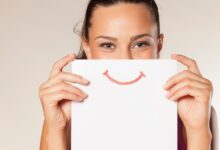
Within Indiana, the topic of sustainability is a complex one. And in recent years, the state has shifted towards a more eco-friendly mindset. A recent poll found that 66% of Indiana residents believe that climate change is one of the world’s most serious issues and should be prioritized at the government level.
Among homeowners, environmental concerns are of particular importance. But as there are many factors to consider in terms of sustainability, homeowners may have questions about what’s best for the environment. For instance, is it more environmentally conscious to reuse and renovate an older home? Or, do the benefits of sustainably sourced housing materials and more efficient forms of heating and cooling outweigh the heavy carbon footprint of new building construction?
Here’s what you need to know about the benefits and pitfalls of new construction versus renovation, and the importance of sustainable building.
Calculating Your Home’s Environmental Footprint
In response to the continued effects of climate change and a fluctuating real estate market in Indiana and across the U.S., green building is more popular than ever. More and more homebuyers are willing to invest in sustainable features, such as energy-efficient appliances, eco-friendly paint, and LED lights. Some homeowners are even going the extra mile in terms of sustainability, installing solar energy systems, and switching to low-water landscaping.
Today, sustainability should factor into the estimated cost of building a new home. By installing energy-efficient appliances and a clean energy system, for example, you’ll see reduced utility costs throughout the life of your home. New construction also gives you more flexibility in terms of material choice, and you can opt to build with sustainably sourced materials or those made locally.
Prefabricated homes offer another potentially sustainable option in the realm of new construction home buying. A prefabricated home is built in pieces on a factory floor and then assembled on your property, saving time and reducing construction waste. To ensure that your prefabricated home is sustainably built, however, it’s important to do a bit of research on the company and its environmental practices.
Considerations for Indiana Homeowners
For homeowners across Indiana, there are many ways to reduce a carbon footprint. You can start by taking a look at your home’s energy usage and output, and make changes if necessary. Outdated air conditioning and heating units may consume excess power, for starters, and release copious amounts of carbon dioxide into the atmosphere. Any home renovation project should address environmental issues and climate change head-on to help improve public health.
If your home has historical value, then renovation is likely the best option, from both an environmental and economic standpoint. According to data from the Advisory Council on Historic Preservation, renovation and preservation projects help offset the enormous amount of waste generated by new construction. In fact, construction debris accounts for about 25% of municipal waste in U.S. landfills.
Yet historic buildings may have existing environmental problems of their own. For instance, buildings in Indiana that were constructed in the 1970s or earlier could have dangerous asbestos lurking in the walls. Asbestos removal typically comes with a high price tag — when asbestos was found in the Madison County Government Center in 2017, the subsequent remediation project cost taxpayers at least $3.5 million.
Making Sustainable Choices into the Future
Considering the high price tag attached to remediation and sustainable home improvements, it’s easy to see why the environment should be a top priority for every home buyer. Whether you’re looking to purchase an empty lot or an existing house, addressing sustainability issues is a crucial part of the process. The good news for modern homeowners is that advancements in technology have made it easier than ever to reduce your home’s carbon footprint.
What’s more, sustainability is such an important topic that many municipalities offer incentives for homeowners making green home upgrades and improvements. In 2021, the city of Bloomington launched its Green Home Improvement Program for residents. The program provides $1,000 rebates and low-interest loans to qualified homeowners within the city limits who are making energy-efficient upgrades.
Qualifying projects may include the installation of geothermal heat pumps, solar energy systems, and/or electric vehicle charging stations. The program was designed especially for low- and moderate-income homeowners in Bloomington, who may also be eligible for a federal income tax credit of up to 26% if they opt to install a solar energy system.
Key Takeaways
For policymakers in Bloomington, the incentive program offers environmental, financial, and social benefits. Environmental stewardship can help strengthen communities, and eco-conscious homeowners are leading the way towards a more sustainable future. For homeowners in Indiana, or those looking to invest in a property, being mindful of your carbon footprint is a great place to start. Then, compare the costs of building a new construction home or renovating an existing one, and don’t overlook the environmental considerations.
Image Source: Unsplash






